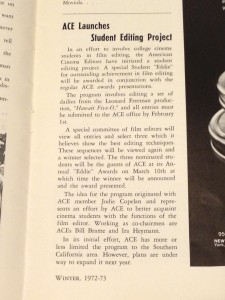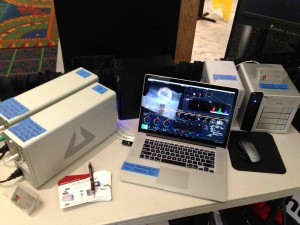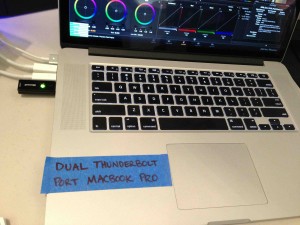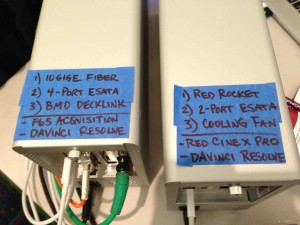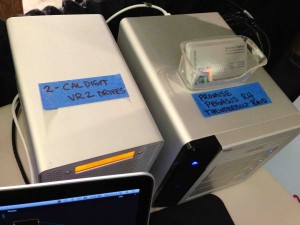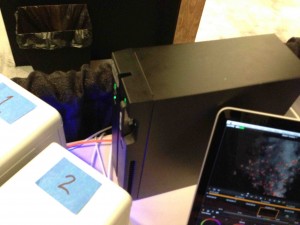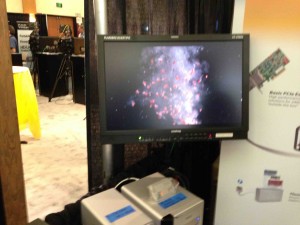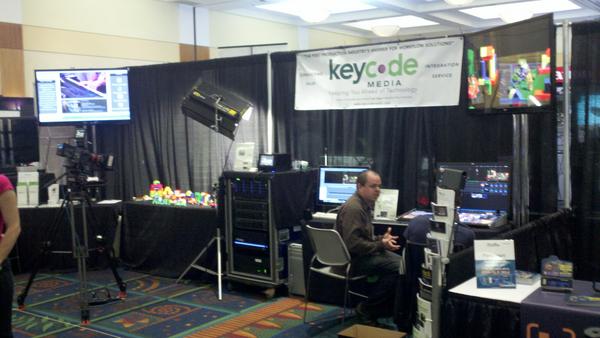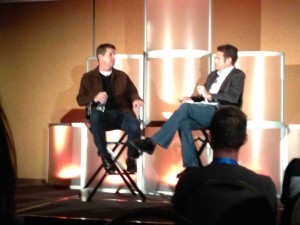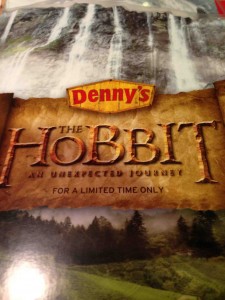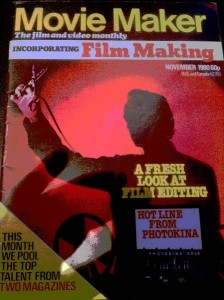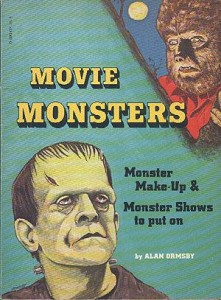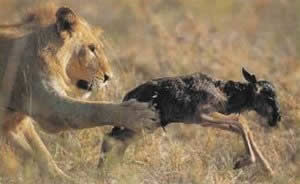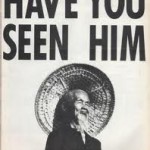Over the last month, I was fortunate enough to be able to spend nine days on the set of a feature film that was being shot in Los Angeles. The film is called Submerged and is written by Scott Milam (Mother’s Day) and directed by Steven C. Miller (Silent Night).
“The story follows a group of college kids on limo ride home from a party, they are soon forced off the road by a ring of vengeful kidnappers and must do what they can to survive.” – Dark Horizons
I met Steven, as I’ve met most of my film and TV contacts, through Twitter. In January of 2011, he spoke at my Independent Filmmakers of the Inland Empire group meeting and we’ve stayed connected, ever since. He is one dedicated filmmaker and his story is amazing. I’m not a big horror film fan, but I’m a fan of passionate drive and Steven is very driven.
Always willing to help people on their own filmmaking journeys, Steven invited a few individuals to be on set to witness movie-making magic. Additionally, someone involved with the film, posted that they were looking for extras for day 1. It was that post, because it happened to be on a day I was off of work, that set in motion my being involved.
Day 1
I arrived early to the base camp. As I exited the freeway, it was cool to see the yellow production signs guiding me to the right location. Upon parking, I saw Steven and he invited me on the transport van with him to drive to the filming spot. He gave me a little rundown of the film and when we got there, he flew into director mode and I hardly saw him the rest of the day. I say I hardly “saw” him. This was because, mostly, I was gathered with the extras (called “background”) and he was usually just out of my sight range but I could hear him all day.  “…and ACTION!”, “CUT!”, etc.
“…and ACTION!”, “CUT!”, etc.
We covered a few scenes that first day, at a “school” and at a restaurant. There were quite a few extras there and it was fun to get to meet them and hear their stories. Everyone has a story, from the top to the extras. Over my time on this production, I heard many. It’s almost as entertaining as the movie itself, all these different paths that brought people to and what they’ve done in Hollywood.
Most of the extras were young, playing high school students. I, being a little older, played what I’ll call “The Teacher”. So, that is the uncredited role I will always imagine myself as having played. So when you see the movie and you see some kids talking in the quad of the high school. Imagine me in the background as “The Teacher”.
You may also see my blurred out elbow passing behind a car’s back window as people are talking inside. If not that, then maybe you’ll see me walking past the window of the restaurant before the bullies enter, or maybe the top of my head inside the restaurant or maybe even one of the two guys grabbing a beer at the bar of the restaurant. As you can see, I’m a multi-faceted actor!
Getting the Education of a Lifetime
I was on set days 1, 2, 3, 6, 7, 8, 10, 11, 12 out of the 15 that were shot.
Day 2, I almost got bumped up to PA, driving a big 20’ plus box-truck but they ended up having someone to drive it. One of the following days, though, I was called to action and spent a few days bopping around L.A. dropping off and picking up equipment at various rental locations. This was also fun, as I got to learn what and where certain things were gotten from and the process of that part of the production. My advice here is, keep your ears open, pay attention to what’s going on. If you have a skill that’s needed, speak up… and step up.
From being an extra to being a PA to just being on set being able to observe all of the moving pieces of a movie production, was amazing and invaluable as far as education goes. I learned more in those nine days then I have in all of the years I have been studying filmmaking. For that, I am eternally grateful to Steven and to all of the cast and crew for allowing me to be a part of their process.
While I was on set, I mostly stayed out of the way and watched and listened and learned. I surely engaged in conversations with cast and crew alike, but I made sure to not get in the way and to not be annoying. There is such a thing as asking too many questions. People on set have jobs to do, let them do them. There are plenty of opportunities to ask questions, when they’re not busy. There is an ebb and flow to the work on a set. Be aware of the tide.
I learned that one of the positives of this set in particular, is that each of the crews (separate groups within the main “crew”, like camera crew, grip crew, electric crew, hair and makeup crew, art crew, etc.) all got along. Sometimes, and most of the time, from what I gather, this isn’t the case on other sets. I consider myself lucky to have had my first extended stay on a film set be this positive.
No film production is all roses though and I did get to observe some issues that arise on set. This, too, though is invaluable as a learning experience. I’ve learned things to do and things not to do. Because of non-disclosure agreements, I can’t go into detail but for you, I will share this bit of advice, get on a set. Start with a small local set if you like, a student film, what have you, but get on a set and help out. Eventually, get yourself on a big production, on many big productions. Get on set and learn. There’s nothing else in the world like it.
Due to the nature of the actions and environments of this film, gun fights, fights, submerging vehicles, etc., safety was a top concern and we were given more-than-daily safety briefings about what was happening, what to be aware of and what to do. This was very helpful and kept me alert to potential dangers not only on this set but even thinking back to my own projects in the past and what to be thoughtful for future projects.
Back to Morale
I heard over and over again how this was either the best or one of the best movie experiences that people had been on. This was from all levels of the production. At the wrap party, I asked one of the guys from the art department, why he thought this project was so fun to work on. Note: this was a low budget movie (for Hollywood standards). People working on this project weren’t motivated by money to be on this project. They were here because they believed in something. Either they believed in the project itself or another person involved in the project. He said that there’s a lot to be said for the passion of the people involved and to see the amazing things that were being produced from their work. And, he added, that amazing Crafty that came on the second week. “People seem a lot happier when they have an amazing breakfast in their stomachs!” Amen Art Guy! Amen! That harkens me back to the “Number one rule” an early producer mentor of mine used to say, “Feed your crew!”
As far as the amazing things (pictures and acting) that were being produced, first off, the pictures (and by that I mean the footage that was being shot) were amazing! It was just damn beautiful to look at. I mean seriously, just beautiful. Then the awesome acting that was performed, I was awestruck. I was truly witnessing something amazing being created. This alone brought me back each day I could arrange to be there. I was hooked. It was awesome. Or as one Intern and I joked, “It looks like a real movie!”
Unfortunately or fortunately for me, it was so awesome that doing anything else, paled in comparison. Going back to my “day job” blew. I could think about nothing else but to get back on set. As I am now. I’m writing this at work!
High Caliber of Crew
One thing that impressed me was the ability of all the crew involved. Each was performing at the top of their game. Grips were able to set up flags and gels with blinding speed to attain the perfect lighting required of the amazing camera crew. The art department had to think on their feet and make last minute changes flawlessly. Makeup and hair, Costume Dept, on and on I saw each department working with or without instruction to create what was needed. It was like a ballet, each person and group performing their piece to the end of a perfectly executed show performance. The PA’s on the set were well grounded and each with complete filmmaking backgrounds themselves. It’s funny how many directors there were on set! People who have or are going to be directing their own films. There are a lot of these as PA’s. They were impeccable PA’s and rounded out the entire ensemble.
Everyone brought their “A” game to the table, from Executive Producers to Producers, to the Director and Director of Photography and his camera crew, from Writer to Actors to Stand Ins to Extras, from Scripty to Crafty from Stunt Coordinator to Stuntmen and Stuntwomen to the Behind the Scenes guy. Well, maybe not him… but he’s a hell of a nice guy! This was a magical slice of time that will stand for a long time as a litmus test to what can be. I know that I, for one, will be comparing my future endeavors to this production.
A “Final” Word
I will be writing more on this at a later date (when plot secrets can be revealed, etc.) but for now let me sum up. I have been a fan of Steven C. Miller’s work for some time now and it’s very satisfying to see him climb higher and higher and create bigger and better features. I have had the Independent Filmmakers of the Inland Empire for some time now (four year anniversary next month) and it’s very satisfying to see members of that group rise higher and higher. I have been studying filmmaking for some time now and it’s very satisfying to see my own understanding grow and grow. I am poised to make a leap to the next level and I hope you are too. Whatever that next step be, take it. Do the next thing. Don’t wait. A writer friend of mine recently told me of something that Rian Johnson said that just really clicked with him and that was something like, “There’s 500 of you in this room and my next piece of advice will be for the 5% of you who don’t need it. Most of you will go off and try to find the money to do your film and it will never be made. The other folks will gather all the money they can and back their project into that budget and make their film, regardless.” I am paraphrasing all over the place but it was that piece of advice that made him realize, he needed to make his film now, right now, with whatever he’s got. Whatever it is that you need to do next, please do it. You’re going to learn more by doing it than anything else.
Thank you.
Eric Francis Harnden

























